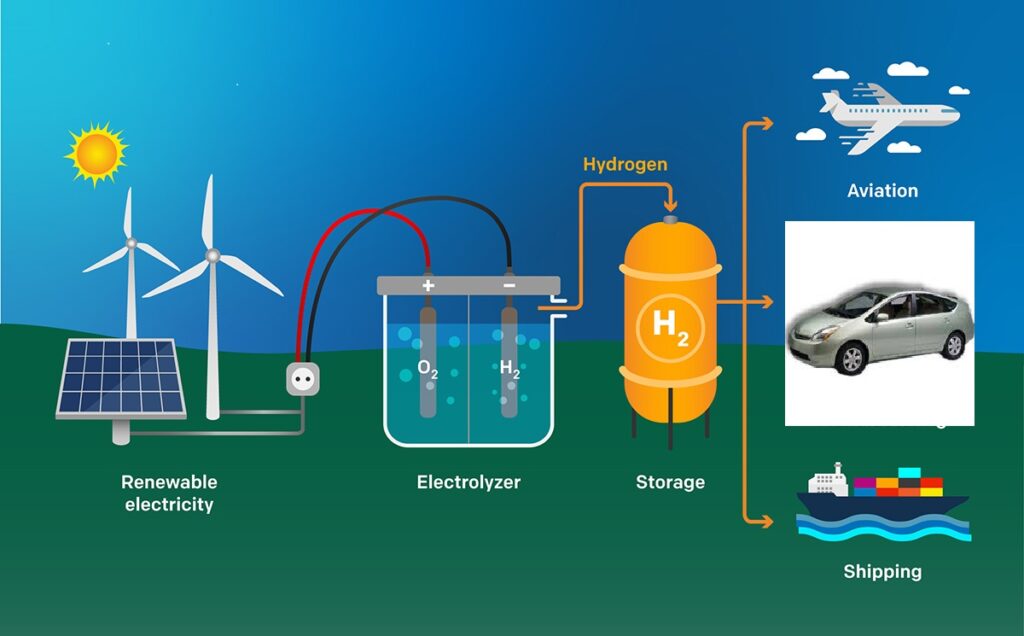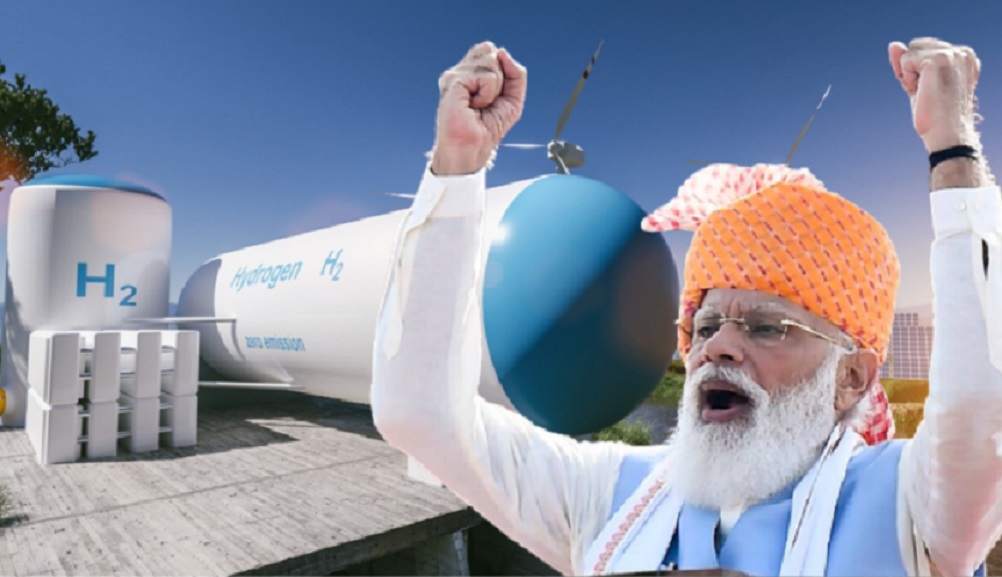“Ample availability of ‘renewable energy power’ gives India an inherent advantage; it can be a global hub of green hydrogen”, Prime Minister Narendra Modi stated in his post-budget webinar on renewable energy on 04 Mar 2022. A statement aligning with the COP 26 declarations held at Glasgow last November.
Reliance, the Indian multinational conglomerate, is targeting to produce green hydrogen at one dollar per kg by the turn of this decade. The firm has announced plans to invest about 75 billion dollars in renewable infrastructure which could turn India into a leading hydrogen producer in the world. Reliance made this announcement in the month of Feb 2022.
A Natural Death for Fossil Fuel?
Hydrogen is a non-toxic, odourless, tasteless, colourless gas with highly combustible characteristics. Apart from fuel, hydrogen is also used in industry for processing foods, manufacturing fertilizers, treating various metals and also in refineries. The application of hydrogen as a fuel is gathering steam around the world and is likely to replace fossil fuel in the near future which would eventually help us achieve carbon neutrality. This initiative will be a big setback to the economy of oil-producing nations which are currently controlling the prices of crude.
The Grey and Blue Hydrogen
Currently, we can manufacture hydrogen as cheap as three to six dollars per kg. Steam reforming of methane or natural gas is done for the manufacturing of hydrogen in bulk. The process is not green, since steam reforming reacts methane with steam at high temperatures along with a catalyst to give hydrogen as well as carbon monoxide, a potential contributor to global warming. This type of hydrogen is called Grey Hydrogen. If we could neutralize the emissions coming out as byproducts during the process, then this hydrogen can be classified as Blue Hydrogen.
The Green Hydrogen and Storage
Green Hydrogen is manufactured through electrolysis by separating water or steam into hydrogen and oxygen. Here we need electricity and electrolytes/ catalysts which are currently expensive. The manufacturing cost of green hydrogen varies from seven to ten dollars per kg. A fair amount of research is on globally to bring down the cost of production, storage, and transporting of green hydrogen.
Hydrogen contains less energy per unit volume than fossil fuels. It requires a large volume of space for storage. Hence transporting and delivering to the end-user makes it expensive. Albeit the cost of hydrogen has become cheaper than petroleum fuels, overheads for delivering to the end customer remain expensive view lack of infrastructure. Storing hydrogen in the liquid form could save space but can only be done at a temperature below minus 253 degrees centigrade.
Hydrogen Based Mobility
Switching over to Hydrogen-based IC engines from fossil fuel-based IC engines is an easy way to adopt hydrogen fuel-based mobility. Storage of hydrogen on vehicles and building infrastructure in fuel stations to store the hydrogen are the main impediments to this changeover.
A car with a hydrogen-based IC engine can take us to approximately 100 kilometres against one kilogram of hydrogen as fuel. This mileage or efficiency can be doubled if we use a fuel cell to generate the electricity from hydrogen which can eventually be used for driving the car in electrical mode. Hence converting current IC engines to Hydrogen may not be a permanent long term solution.
It is imperative to construct an echo system and infrastructure at the national level for adopting green hydrogen as fuel. Hydrogen as a fuel in IC engines can achieve an efficiency above 25 % whereas the EV cells-based electric-driven motors FCEV (Fuel Cell Electric Vehicle) can get an efficiency near 40%. This improved efficiency makes FCEV an ideal choice for future transportation. The battery-based EV vehicles remain a challenger to FCEV since the efficiency of EV is nearly 80%. But battery-based EV comes with the baggage of battery management and downtime for charging.
Mr Nitin Gadkari launched the fuel cell electric vehicle (FCEV), in India, Toyota Mirai on 16 Mar 2022 aiming to create an ecosystem for such vehicles in the country. Toyota Kirloskar Motor Pvt Ltd and International Center for Automotive Technology (ICAT) are conducting a joint project to fine-tune Toyota Mirai on the Indian roads and climatic conditions.
Getting hydrogen fuel for shipping lines will be a game-changer. Storing hydrogen in liquid form takes less space onboard. We need to keep hydrogen at minus 253 degrees below the freezing point. Having a hydrogen generator plant mounted on a ship would be an alternative to overcome the storage and transportation issues. Hydrogen based energy coupled with all-electric propulsion would certainly improve the efficiency of ships. Getting hydrogen for aircraft propulsion can be ruled out due to storage constraints. Biofuel is the best bet for aviation.

Way Ahead
There are various methods apart from electrolysis for generating green hydrogen. Hydrogen generated by an echo friendly method can only be classified as green hydrogen. In the process of manufacturing hydrogen, the byproducts generated should not trigger global warming or pollution.
There is a need to give an added impetuous by academia and industry on research activities associated with hydrogen fuel cells. The bulk manufacturing cost of green hydrogen at one to two dollars per kg is another target that needs to be set by the industry. Exploring the availability of cheap electrolysis and catalysts for splitting hydrogen and oxygen could make the electrolyte process cheaper. Currently, platinum is used as an effective catalyst, which is very expensive.
Better storage and transport infrastructure for taking hydrogen to the end-user with minimal overheads need to be developed. Existing renewable sources of energy like solar and wind can be used as a primary source of energy, which in turn cut the cost of production. With the current pace of research and activity, it could take another decade or more for hydrogen to replace the existing fossil fuel. We are yet to receive any road map with a timeline from the Government for rolling out hydrogen as a primary fuel for mobility. Green hydrogen will become a game-changer for fuel-starved nations in the future.
Title image courtesy: Opindia
Disclaimer: The views and opinions expressed by the author do not necessarily reflect the views of the Government of India and Defence Research and Studies








